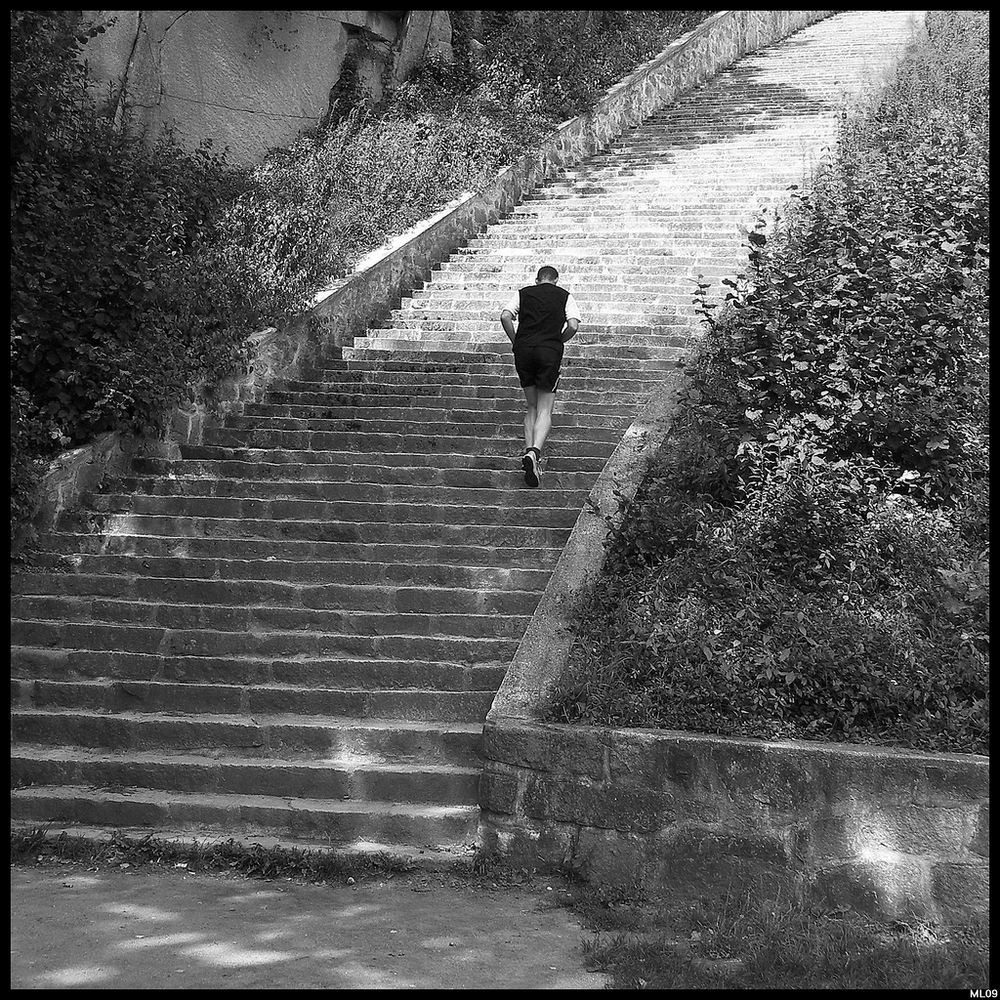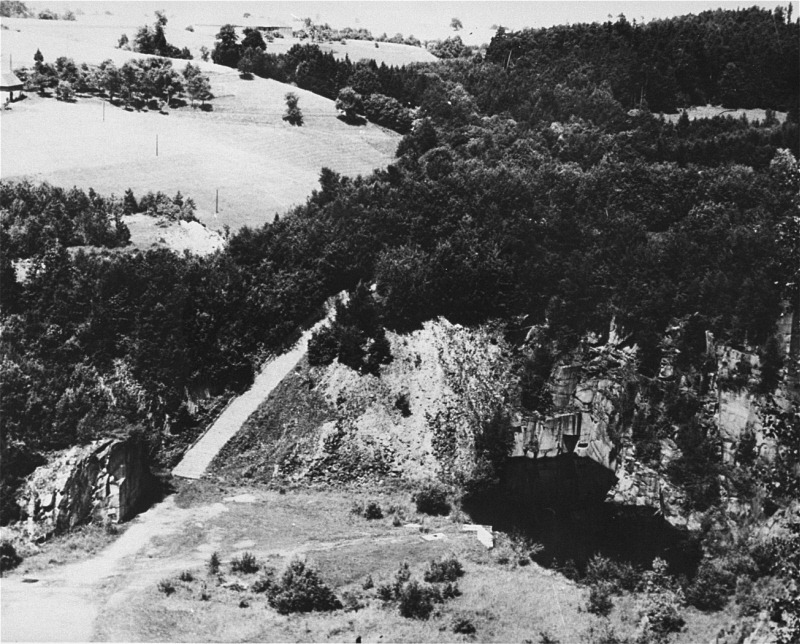The Mauthausen concentration camp, situated about 20 kilometers east of the city of Linz in Upper Austria, was the hub of one of the largest labor camp complexes in the German-controlled part of Europe, with a central camp near the village of Mauthausen, and nearly one hundred other subcamps located throughout Austria and southern Germany. Among these Mauthausen had the most brutal detention conditions. It was classified “Grade III”, where the most “incorrigible political enemies of the Reich” were sent to be exterminated, often through exhaustion by grueling forced labor. The SS called Mauthausen Knochenmühle, or the bone grinder.
The camp was located on the edge of a granite quarry where camp inmates were sent to work. Indeed, the site for the camp was chosen because of the quarry’s close proximity to Linz, a city Hitler planned to rebuild with grandiose buildings as envisioned by Albert Speer.

The Stairs of Death at Mauthausen concentration camp, then and now.
Several times throughout the day, prisoners were forced to carry blocks of stone, often weighing as much as 50 kilograms, up the 186 stairs of the so called "Stairs of Death". Often, exhausted prisoners would collapse and drop their load on top of those following, creating a horrific domino effect with prisoners falling onto the next, and so on, all the way down the stairs. The heavy stones would crush their limbs and bodies. People died on these stairs every day.
Sometimes, the SS guards would force the exhausted prisoners to race up the stairs carrying blocks of stone. Those who survived the ordeal would then be placed in a line-up at the edge of a cliff, the SS called "The Parachutists Wall". At gun-point each prisoner would have the option of being shot or pushing the prisoner in front of him off the cliff. Some prisoners, unable to bear the tortures of the camp, would willfully jump off the cliff. Such suicides were frequent.
Today, the "Stairs of Death" form part of the guided tours at the Mauthausen Memorial. The stairs have been redone and straightened so that tourists can easily climb up and down them, but at that time they were tilted and slippery.
From the accounts of Christian Bernadac, a French resistance fighter who was imprisoned at Mauthausen, and later wrote a book titled The 186 Steps,
Those who visit the Mauthausen quarry today, don't see the same thing, for since then, the steps have been redone - a real stairway, cemented, and regular. At that time, they were simply cut with a pick into the clay and rock, held in place by logs, unequal in height and tread, and therefore extremely difficult, not only for climbing but also for the descent. Stones rolled under our wooden-soled sandals, and we were forced to keep moving at a very rapid pace.
The work consisted of carrying up a stone of considerable size and weight, along the 186 steps, after which there was still a considerable distance to cover. The man who chose a stone found to be too small was out of luck. And all of this went on at the rate of eight to ten trips per day. The pace was infernal, without a second's rest.
The Mauthausen quarry is now overgrown with trees and bushes. Much of the camp site is also covered by residential areas built after the war. There is a museum now and a visitor center.

Photo credit: Ramón Cutanda López/Flickr

Photo credit: Sonya Brunt/Panoramio

Photo credit: Martin/Flickr

Photo credit: damian entwistle/Flickr

Photo credit: German Federal Archive/Wikimedia

SS officers climbing the "Stairs of Death", April 1941. Photo credit: German Federal Archive/Wikimedia

View of the Wiener Graben quarry and stone "stairs of death" (Todesstiege) at the Mauthausen concentration camp. Photo credit: United States Holocaust Memorial Museum

Prisoners at forced labor in the Wiener Graben quarry at the Mauthausen concentration camp. Photo credit: United States Holocaust Memorial Museum

Photo credit: German Federal Archive/Wikimedia

Photo credit: German Federal Archive/Wikimedia
Sources: Wikipedia / scrapbookpages.com / www.wien.gv.at



I'm confused, the photo from 1941 shows the stairs as being similar to today, yet the account from the prisoner describes them as being in a much worse state. Any ideas? Perhaps the stairs were new in 1941 then deteriorated with heavy use and no maintenance?
ReplyDeleteGolly this sure is amusing!
ReplyDeleteUgh, more of your opinion. Enough of this
ReplyDeleteHi trump supporter. Alternative facts, amirite?!
ReplyDeleteWouldn't this be anti-Holocaust propaganda? I don't think the intention of the writer was to encourage more mass slaughter of innocents.
ReplyDeleteMade in Germany.
ReplyDeleteCan you please go ahead and die of cancer already?
ReplyDeleteI also noticed the stairs in the SS pic seemed better than the written description. No, this isn't "anti holocaust propaganda", just an observation.
ReplyDelete